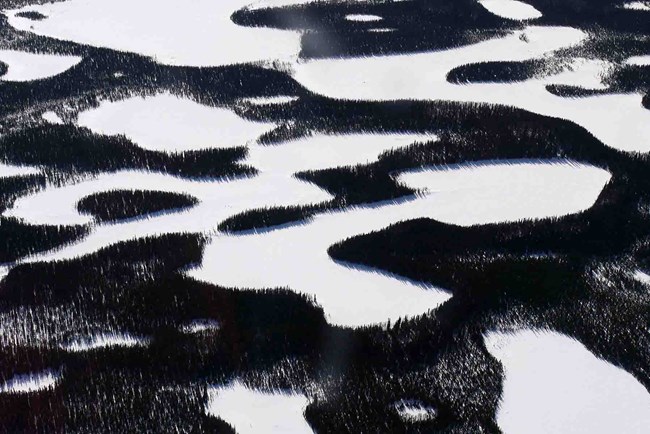
Well over 25,000 shallow lakes and ponds are distributed across Central Alaska Network parklands. Although numerically significant, lakes cover less than 3% of this vast landscape. Despite their rarity, lakes and ponds provide critical habitat for a diverse array of plants, animals and insects and play a critical role in storage, release, and purification of water. In addition, lakes in the subarctic sequester significant amounts of carbon. Lakes throughout the network are highly variable, ranging from cold, clear mountain lakes to large, shallow, productive wetlands. Most were formed over the past 12,000 years by a variety of geologic processes, including glacial, fluvial, Aeolian, and thermokarst activity. Physical, chemical, and biologic structure of these lakes is largely governed by extreme seasonality. Lakes are typically ice covered by mid-late October, and break up in April/early May, followed by a 3-4 month long growing season. Recharge results primarily from the melting of seasonal snowpack; however, it is strongly influenced by stochastic events such as ice jams and flooding. Seasonal shifts in the timing and duration of seasonal snow pack, length of the frost free period, and evaporation and evapotranspiration rates can have important consequences on lake hydrology, annual heat budget, and lake chemistry. Lakes in the subarctic are highly susceptible to these changes because mean annual air temperature in this region is near 0°C. Only a slight increase in temperature or a shift in the hydrologic regime can have immediate consequences on lake dynamics and ecology. Increased mean annual air temperature, airborne contaminants, changing atmospheric chemistry, and invasive species all pose serious threats to the integrity of lake ecosystems throughout the network's parklands. We monitor shallow lakes in in order to understand:
We monitor shallow lakes in all Central Alaska Network parklands. Contact: Amy Larsen Learn more |
Last updated: January 30, 2019
